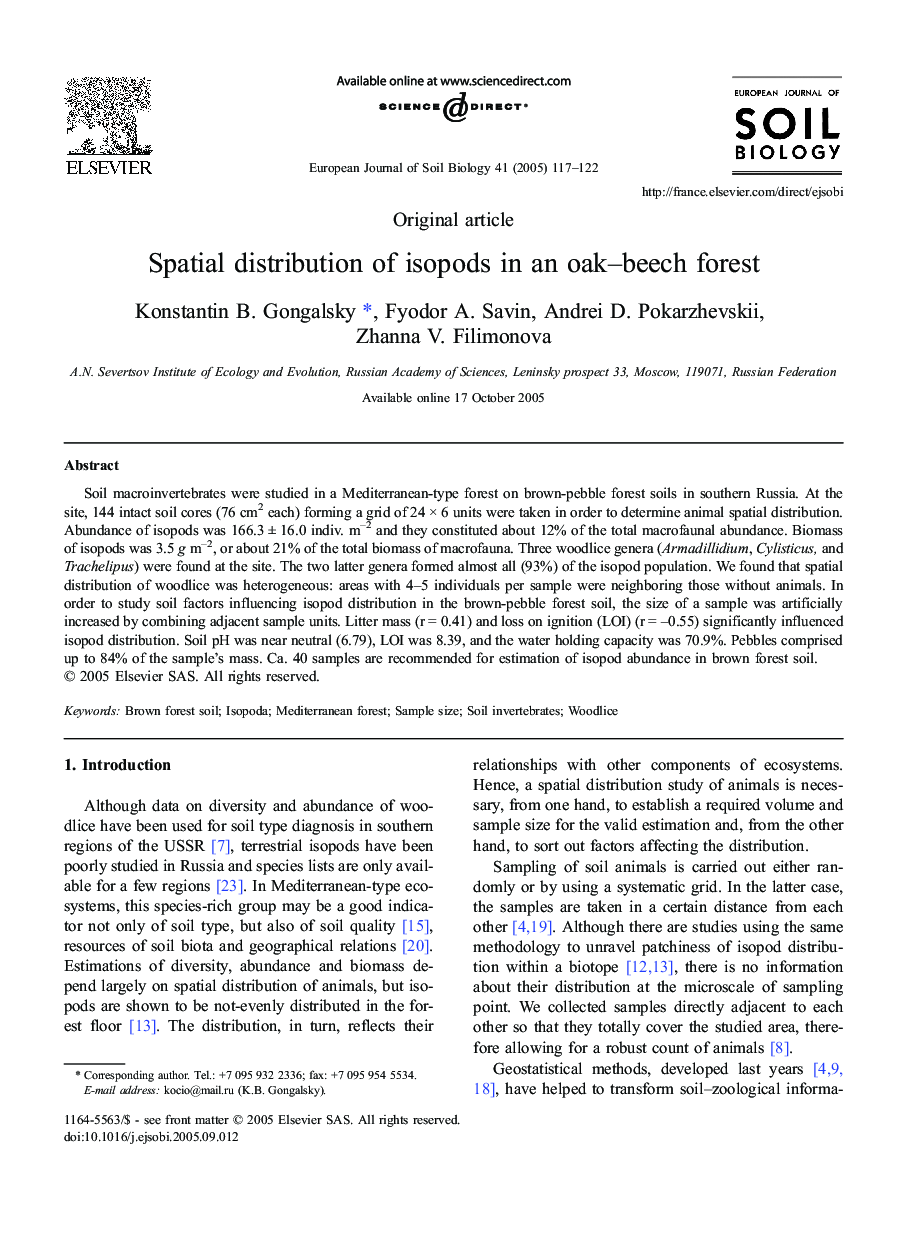| Article ID | Journal | Published Year | Pages | File Type |
|---|---|---|---|---|
| 10110165 | European Journal of Soil Biology | 2005 | 6 Pages |
Abstract
Soil macroinvertebrates were studied in a Mediterranean-type forest on brown-pebble forest soils in southern Russia. At the site, 144 intact soil cores (76 cm2 each) forming a grid of 24 Ã 6 units were taken in order to determine animal spatial distribution. Abundance of isopods was 166.3 ± 16.0 indiv. m-2 and they constituted about 12% of the total macrofaunal abundance. Biomass of isopods was 3.5 g m-2, or about 21% of the total biomass of macrofauna. Three woodlice genera (Armadillidium, Cylisticus, and Trachelipus) were found at the site. The two latter genera formed almost all (93%) of the isopod population. We found that spatial distribution of woodlice was heterogeneous: areas with 4-5 individuals per sample were neighboring those without animals. In order to study soil factors influencing isopod distribution in the brown-pebble forest soil, the size of a sample was artificially increased by combining adjacent sample units. Litter mass (r = 0.41) and loss on ignition (LOI) (r = -0.55) significantly influenced isopod distribution. Soil pH was near neutral (6.79), LOI was 8.39, and the water holding capacity was 70.9%. Pebbles comprised up to 84% of the sample's mass. Ca. 40 samples are recommended for estimation of isopod abundance in brown forest soil.
Related Topics
Life Sciences
Agricultural and Biological Sciences
Soil Science
Authors
Konstantin B. Gongalsky, Fyodor A. Savin, Andrei D. Pokarzhevskii, Zhanna V. Filimonova,
